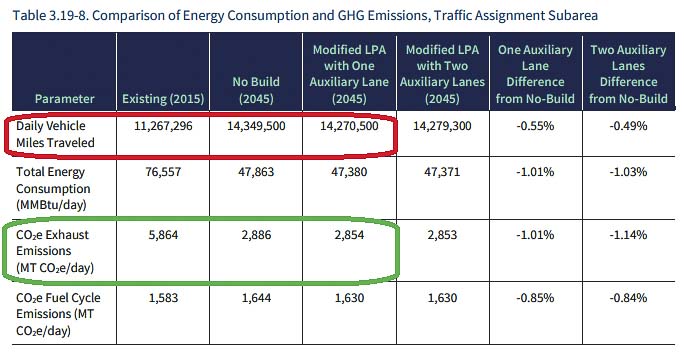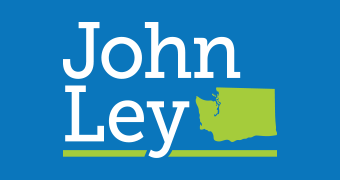In a recent appearance on The Lars Larson Show, John Ley, a candidate for the Washington House of Representatives (District 18, Position 2), tackled the massive and controversial Interstate Bridge Replacement project. The proposed new bridge over the Columbia River, part of the I-5 corridor, is being billed as a much-needed upgrade to ease congestion between Vancouver, Washington, and Portland, Oregon. However, John Ley paints a very different picture of what this $9 billion project will actually achieve.
Ley, a retired airline pilot and current reporter for Clark County Today, highlighted the failures of the bridge replacement plan, which he believes will only worsen traffic congestion rather than improve it. He discussed how, despite billions of taxpayer dollars being funneled into the project, over half of the bridge surface area will be dedicated to pedestrians, bicycles, and light rail—leaving only 46% for cars and trucks, which make up the majority of the traffic.
In his conversation with Lars Larson, Ley pointed out that the project fails to live up to its promises of reducing carbon emissions. According to the project’s own Environmental Impact Statement, adding mass transit and light rail would actually increase carbon emissions, and doing nothing would result in a 49% reduction in emissions. This finding contradicts the green credentials the bridge’s advocates have been touting, revealing that the construction could be an environmental and financial disaster.

John also emphasized the 41-year carbon payback period for the bridge’s construction, meaning that any minimal carbon savings won’t offset the environmental impact until several decades later. He argued that a simpler, more cost-effective bridge could have addressed the region’s congestion issues without adding unnecessary complexities.
Perhaps most striking was Ley’s assertion that, rather than reducing traffic congestion, the new bridge could nearly double commute times, leaving residents worse off than they are now. Morning commutes, currently around 29 minutes, could stretch to almost an hour after the bridge is built, which would also delay C-Tran express buses by 11 minutes. For businesses dependent on timely deliveries, the increased congestion could have a significant economic impact.
The discussion reveals critical flaws in the Interstate Bridge Replacement project, from its environmental shortcomings to its failure to meet the region’s traffic needs. John Ley is calling for a more practical, affordable solution that genuinely benefits the Pacific Northwest and its people.
To hear the full conversation and gain deeper insight into why this project needs to be reconsidered, watch John Ley’s interview with Lars Larson.
For more from John Ley and to support his campaign for Washington House of Representatives, District 18, Position 2, visit https://electjohnley.com. John is committed to bringing practical, taxpayer-focused solutions to the people of Washington.
Transcript
Lars Larson:
Welcome back to the Lars Larson Show. It’s a pleasure to be with you and live on the Radio Northwest Network, where we talk about the concerns of the Pacific Northwest states: Oregon, Washington, and Idaho. I want to arm you up with some information about one of the biggest public works projects in the entire region. I mean, it promises to be as expensive, if not more expensive, than even the Sound Transit nonsense that Seattle’s been doing.
And of course, the other light rail nonsense that the city of Portland is doing, and the high-speed buses and everything else. I want to turn to John Ley, who’s a retired airline pilot but also a reporter for Clark County Today and candidate for the Washington House of Representatives, District 18, Position 2. John, this is kind of amazing stuff because the whole argument about the Interstate Bridge Replacement is that there needs to be a new bridge.
It is one of the biggest choke points on Interstate 5 that runs all the way from Canada down to Mexico on America’s west coast. Yet this bridge, which has been a thorn in the side of, and that’s probably a bad metaphor, but the bridge has been a giant choke point because it has a lift span in it.
So they said, well, we’ll build a bridge that goes straight across, high enough to pass river traffic, which it’s not going to do. And it started out at about, I think, $3.5 billion, and now it could go as high as $9 billion. You and I have talked about all of that, and the fact that they’re allocating over 50% of the bridge surface for pedestrians, bicycles, and trains, and only 46% for cars and trucks.
But then it gets worse when you consider whether or not it’s a green project. Welcome back to the program. Explain to my audience how it is that even the bridge’s advocates are admitting that it doesn’t change carbon dioxide much at all, does it?
John Ley:
Hey, Lars. The I-5 bridge program likes to tout their green credentials. They tell you increasing mass transit helps reduce carbon emissions and will help both Oregon and Washington meet their carbon emission reduction goals. But nothing could be further from the truth. Actually, doing nothing would deliver a 49% reduction in carbon emissions and save taxpayers $7.5 billion.
Lars Larson:
It wouldn’t get us a new bridge, though.
John Ley:
Yeah, well, that’s true. And of course, they ought to spend a whole lot less and focus on a simple bridge that would actually improve traffic congestion. But their own data in their Environmental Impact Statement shows that adding transit actually adds more CO2 instead of reducing it, and that road traffic, i.e., cars and trucks, actually sees a significant decline in carbon emissions. Therefore, the $2 billion they’ve advocated and allocated to the 1.9-mile MAX light rail extension is actually bad for the environment, and that’s what is contained in their own data.
You did a wonderful job the other day highlighting that fact.
Lars Larson:
Well, thanks for the high praise. But I want people to understand this. They forget that when you build something, that has a carbon impact as well. It takes carbon to make steel. It takes carbon to make concrete. It takes carbon to assemble all those parts into anything, whether it’s a bridge or a light rail line or anything else.
How long would it take for the savings that they’re claiming in CO2 to even break even, where the amount of carbon you’ve put into building the new bridge, which is no bigger than the old bridge, is offset by the savings in CO2? It’s an amazingly long time, isn’t it?
John Ley:
Yep, over 41 years just to recover 9 to 15 years of construction carbon emissions. The project admits in its data that they’re only going to save 31 metric tons of carbon per day, which when you’ve got nearly half a million tons emitted during construction, it’s going to take 41 years plus to recover that. Obviously, doing nothing would be cleaner from a greenhouse gas emissions perspective.
Number one. Number two, you could actually buy carbon offsets for less than one penny per car per day and reduce more carbon emissions. This whole thing is such a ridiculous boondoggle.
Lars Larson:
And you finally put a number to something I’ve always wondered about. Because, John, I know that if I’m on a freeway and I’m stuck in congestion, which, as you pointed out, is going to get worse with the new bridge and not any better at all. There is no improvement in congestion. You say, well, does that have a pollution component to it?
And the answer is, if you’re driving your car and you can at least go 30 miles an hour, not freeway speed, but 30 miles an hour, or you’re idling along in bumper-to-bumper congestion traffic, how much more pollution is my truck—my pickup truck—putting out if I’m idling along and going bumper to bumper versus going 30 miles an hour? It’s amazing how much more polluting it is, isn’t it?
John Ley:
Yeah, it’s about 20 times worse in congested traffic than if you were moving along at 30 miles an hour. And of course, if you were actually moving along at freeway speeds, you would be even better off. But it’s one more facet of this reality that is such a sad joke. And a component of this is people’s most valuable commodity is their time.
Whether it’s time at work, time with their family—whatever—they want to save time. And that’s what the project heard over and over again in all of their surveys. And yet, after they build this, pushing all of their green things, their traffic time for people commuting in the morning is going to almost double from 29 minutes to between 54 and 58 minutes, which is ridiculous after expending 7.5 billion bucks.
But an additional component of this is that they’re already revealing that it’s going to take 11 minutes longer for C-Tran express buses to go from Vancouver down to downtown Portland. So again, you could eliminate spending 2 billion transit dollars on the expenditure and save not only time but reduce carbon emissions.
Lars Larson:
And of course, John, you know, I know we always talk about in terms of our personal time or whatever. I feel sorry for all the companies that have businesses in the metro area, whether it’s Vancouver in southwest Washington or the Portland Metro. Because if I was running a business—my product is delivered by radio, so it goes roughly at the speed of light—but if I said, well, with this congestion, my trucks will be able to make four deliveries a day instead of six, all of a sudden my business may actually be losing money because of the congestion. Am I right?
John Ley:
Exactly right. It’s absolutely horrific. And sadly, the program keeps repeating the lie that you can’t build your way out of traffic congestion. When I-205 was built and opened 40-plus years ago, we actually saw about an 18% reduction in the number of vehicles using I-5, and it took over a decade of growth in the local Portland metro area before traffic numbers on I-5 and the Interstate Bridge caught back up with what was there before I-205 was opened.
Therefore, you can build if you have the will to reduce traffic congestion and improve not only traffic flow but save people time. And so that ought to be the focus of this for both the freight haulers and the people.
Lars Larson:
And you’re right. That’s John Ley, retired airline pilot running for the Washington House of Representatives, District 18, Position 2. John, thanks very much. Coming up, the United Nations actually produces something of value, and I’ll tell you about it next. I’ll get to your phone calls and emails.

